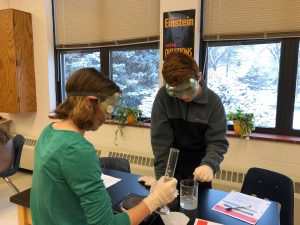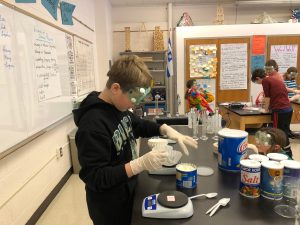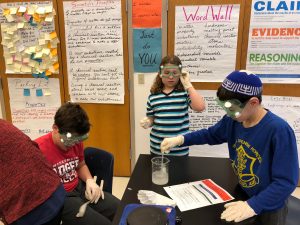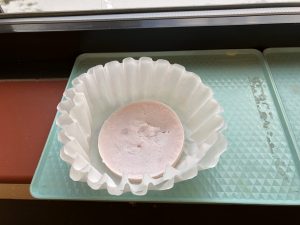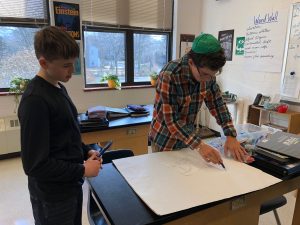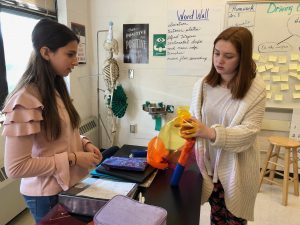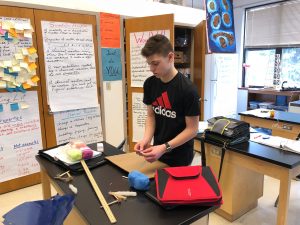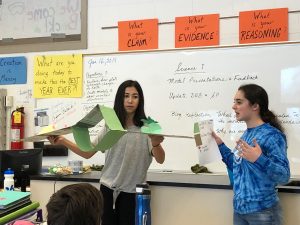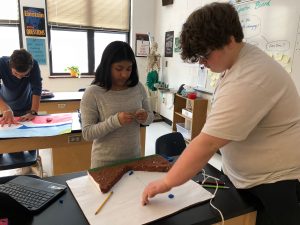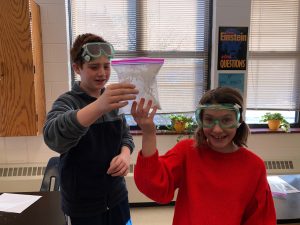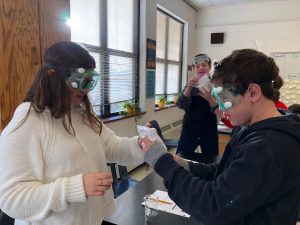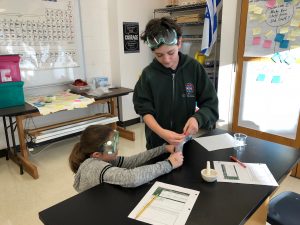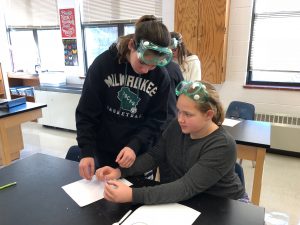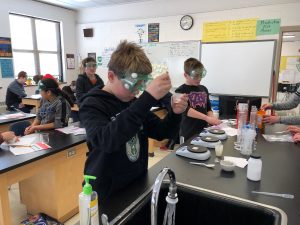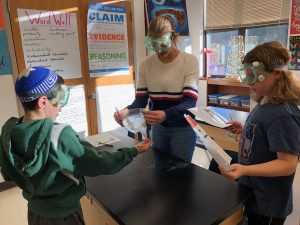The seventh graders have been pondering the question: How Can I Make New Stuff From Old Stuff? They began their study of chemistry by looking at the properties that make matter unique-solubility, melting point, density, color, and hardness. They tested these properties in fat and soap. This led students to wonder what happens when we mix different substances together. Students noticed that sometimes these substances seem to simply “mix” and at other times something more dramatic happens–a color change, fizzing, foaming, and bubbling, a solid is formed, heat is created, and/or a gas is produced. Students learned that when certain substances are mixed a chemical reaction can occur to make new substances. They examined closely how these changes take place at the molecular level and learned that atoms break apart and rearrange to form new substances. The unit ended with students asking the question: Can I make soap from fat? And, that is exactly what they did this week. Students will be writing a final blog post today to reflect on all they have learned. Check it out and feel free to comment!


